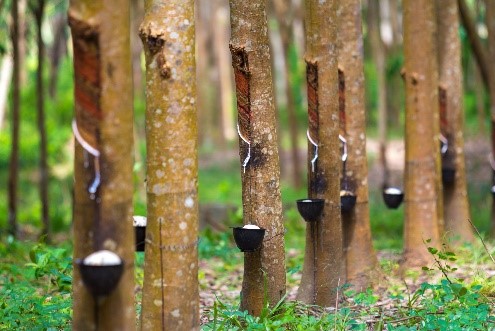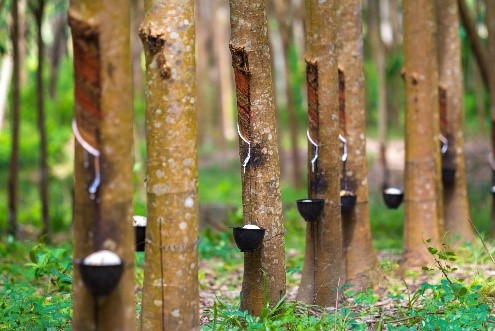Description

Disclaimer: Copyright infringement not intended.
Context
Highlights
Rubber Plantation overview
- Humans are overusing the world’s tropical forests. According to World Wide Fund for Nature every year, about 140,000 square kilometers of forests are lost. A large proportion of primary forest in India has been converted into monoculture plantations like tea, oil palm, teak and natural rubber. Rubber plantations have doubled their global base from 1960 to 2000.
- In 2020, the worldwide planted area of rubber was 14,878.1 thousand ha, out of them 822,000 ha of which was in India, according to Statista’s 2021 report. Culturing natural rubber in the last century has brought significant economic benefits for growers. But excessive rubber plantations are adversely affecting various wildlife and plant species.
.jpeg)
Impact on Non-Human Primates and Biodiversity
- The number of monkeys in the rubber plantation area is much lower than in the nearby forests and the primates spend less time in rubber plantations.
- Due to the reduction in forest cover, monkeys occasionally enter rubber plantations for food, but they find little in monoculture plantation areas. As a result, monkeys are suffering, their behaviour is changing and species diversity is decreasing.
- Non-human primates are of central importance to tropical biodiversity and various ecosystem functions. These primates help in the pollination, seed dispersion and seed germination of many plants and they are essential seed predators in some ecosystems. But due to the growing rubber plantations, they do not get enough food, which makes their survival difficult. This threatens the species and the primates can go extinct, disrupting the environment’s natural state.
- Fewer shrubs and herbaceous plants grow in rubber plantation areas than in the forests as people cut and destroy these plants. This has decreased the biodiversity value of the plantations.
- Many wild animals and plants are slowly disappearing as more and more forest land is being converted into plantations for financial gains.
Solution
- The solution is building eco-friendly rubber plantations. Growing fruiting plants in rubber plantation areas, maintaining a specified distance, so animals are more attracted to them.
- Various plants should also be kept intact at the edges of the rubber plantation and around the water bodies, which provide shelter or food habitat for many animals in these areas.
- The agroforestry system allows rubber plants, forest vegetation, edible and useful plants planted together and kept at proper intervals, which is economically suitable and also will help conserve biodiversity.
Rubber
- Rubber consists of polymers of the organic compound isoprene, with minor impurities of other organic compounds.
- The main chemical constituents of rubber are elastomers, or “elastic polymers,” large chainlike molecules that can be stretched to great lengths and yet recover their original shape.
- Thailand and Indonesia are two of the leading rubber producers.
- India is the world's second-biggest consumer of natural rubber and the fourth-largest producer of Rubber in the world after Thailand, Indonesia and Vietnam.
- Hevea brasiliensis, or rubber tree, is a flowering plant belonging to the spurge family The milky latex extracted from the tree is the primary source of natural rubber. Brasiliense is a tall deciduous tree.
- The tree requires a tropical or subtropical climate with a minimum of about 1,200 mm per year of rainfall, and no frost. If frost does occur, the results can be disastrous for production. In the wild, the tree can reach a height of up to 140 feet.
.jpeg)
Distribution in India
- States like Kerala and Tamil Nadu are traditionally rubber-growing regions in India. However, Tripura, Assam, Manipur, Meghalaya, Karnataka, Andaman and Nicobars Islands, Goa, Maharashtra, Orissa, West Bengal and Andhra Pradesh have non-traditional rubber plantation areas as well, according to the Indian Council of Agricultural Research.
- Kerala being the largest producer produces around 74% of India's total rubber production.
- Kottayam, Kollam, Ernakulam, Kozhikode districts produce Rubber in Kerala.
- Nilgiri, Madurai, Kanniyakumari, Coimbatore and Salem are the chief rubber-producing districts of Tamil Nadu.
- Chikmagalur and Kodagu are the main producing districts in Karnataka.
https://www.downtoearth.org.in/news/wildlife-biodiversity/rubber-plantations-in-tripura-affecting-monkeys-vegetation-suggests-paper-86942













